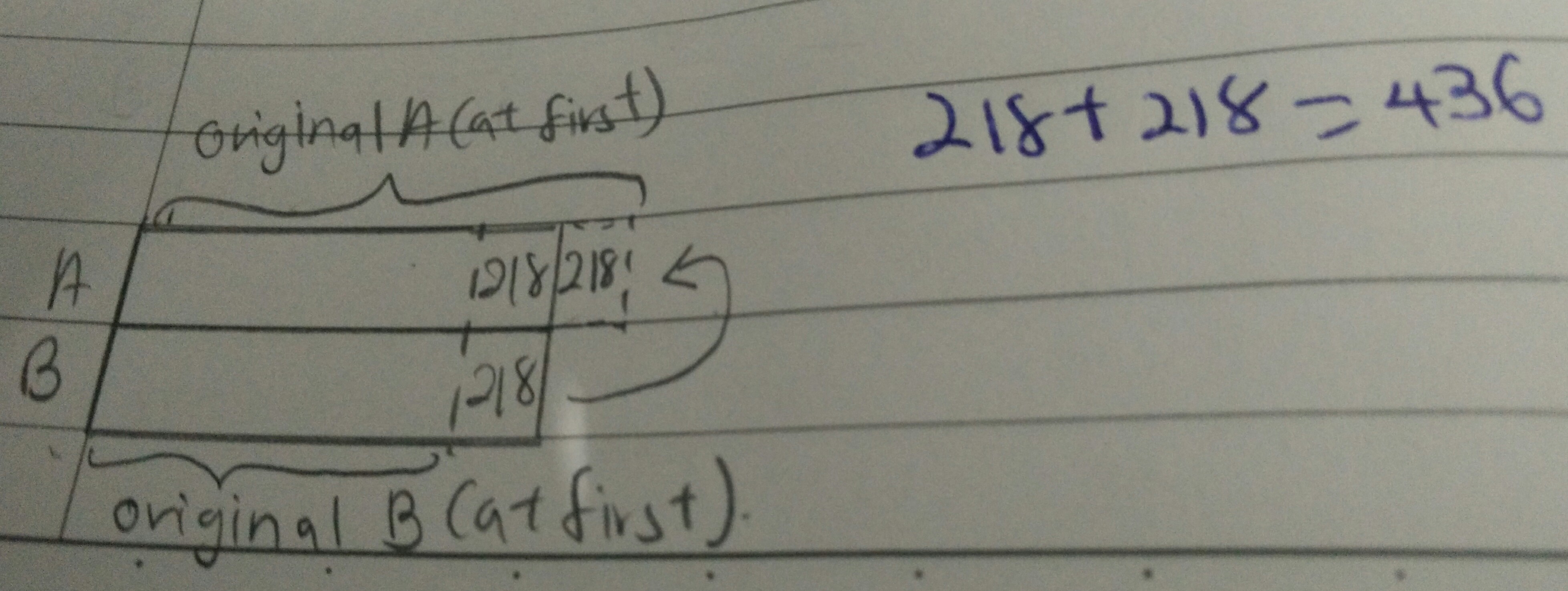Yee Miao Ling's answer to Audrey Woo's Primary 3 Maths question.
done
{{ upvoteCount }} Upvotes
clear
{{ downvoteCount * -1 }} Downvotes
Hi, yes, this is a sort of before and after question. Now the two ponds have equal number of guppies AFTER transferring. So we'll need to work backwards this time.
So instead of drawing A transfer to B, we can imagine it as B giving back the 218 guppies back to A. So the model of A will increase by 218 (the dotted part of the model), which is the original A (before).
Model of B will decrease by 218, which again will change it back to the original B (before).
I've reduced the model into just one single set of model. Hopefully, looking at the model may help you understand the explanation better.
So instead of drawing A transfer to B, we can imagine it as B giving back the 218 guppies back to A. So the model of A will increase by 218 (the dotted part of the model), which is the original A (before).
Model of B will decrease by 218, which again will change it back to the original B (before).
I've reduced the model into just one single set of model. Hopefully, looking at the model may help you understand the explanation better.
Date Posted:
7 years ago


